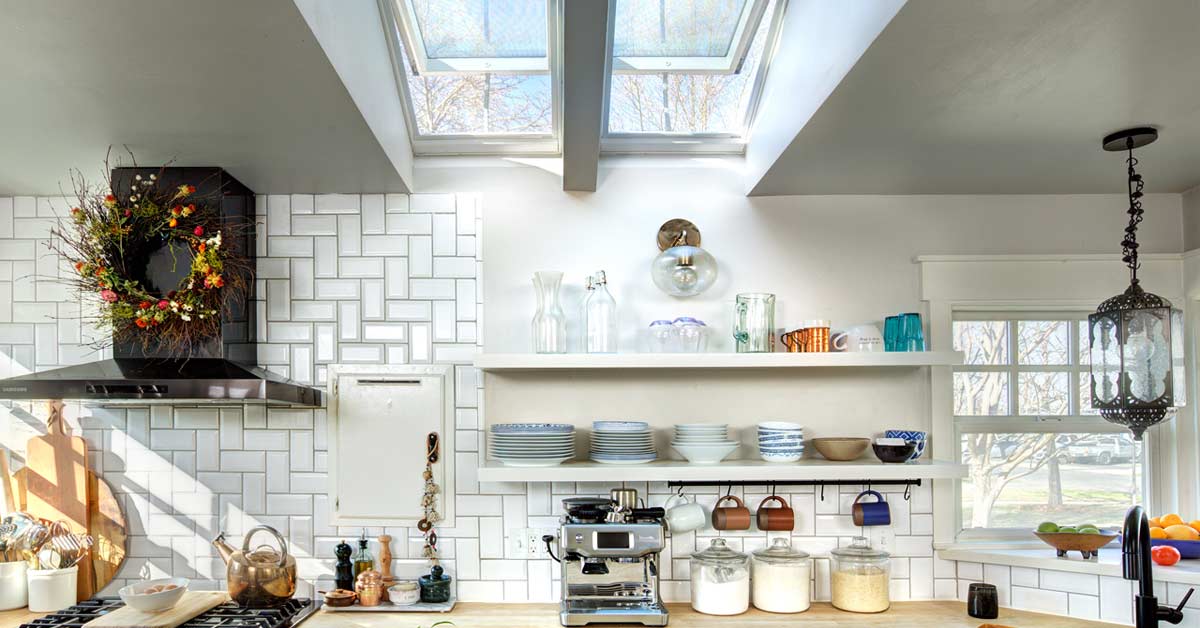
14 Dec What You Need to Know About Skylights Before Installing
Skylights make a wonderful addition to almost any home. They allow Mother Nature to flood your home with her particular light, make your home feel more open and spacious and add a good bit of value when it comes to placing your home on the market. However, there are some things you need to know about skylights before installing one in your home.
Everything You Need to Know Before Installing Your Skylights
Skylights, though a dandy solution for a lot of Quad Cities homeowners, aren’t necessarily right for everyone. On the plus side, todays skylights are much more installer-friendly and extremely durable as well. They come in a variety of sizes and they’re super-insulated to prevent loss of heat or AC. But there are certain things you need to know about skylights before you make the investment. And we’re here to offer that information.
Understand What Location Works Best for Skylights Before Installing
It can be hard to decide the most advantageous place to install your skylight. While some homeowners may indeed have the ideal spot for their skylight most of us need to ponder things like the effect on day-to-day living. The amount of natural like, for instance, is much more consistent when you install on a north-facing part of your roof. As a homeowner, one important thing to know about skylights before installing one is where in your home do you need the light? Are there dark spots or rooms without sufficient windows? Those areas are perfect for a skylight addition.
Features You Need to Know About Skylights Before Installing
Skylight features vary and there are features you need to know about skylights before installing. Do you prefer a flat skylight? Or would you rather a skylight that is domed? Some homeowners like the added benefit of venting and therefore prefer a non-fixed type to improve airflow. Another thing you need to know about skylights before installing? They are available with shades so you can block out the light or filter too-bright sunlight with black-out shades or light-filtering blinds. The addition of shading boosts your energy efficiency as well.
Know The Right Skylight to Eliminate Heat Gain
In addition to knowing the right features for maximum benefit you should also be aware of the types of skylights most beneficial for preventing heat gain which can up your utility bills and make your home uncomfortable. You can offset these issues by selecting a skylight constructed of double insulted glass with a low-E coating. Some efficiency experts encourage you to install bronze tinted skylights to prevent both heat and sun damage to your home’s interior. Another thing you need to know about skylights before installing? You can minimize the physical and financial discomfort of heat gain by installing your unit at a lower slope. The US Department of Energy suggests you install your skylight 5 to 15 degrees lower than your home’s latitude.
Think About Automatic Skylights
If you have the wiggle room in your budget consider automatic skylights. These are units that have heat and rain sensors built in and they are ideal for areas with four seasons and lots of weather variables. Like the Quad Cities. The sensors are set to detect temperatures and humidity and may open slightly in response. These highly intuitive sensors also detect moisture in the air indicating rain or snow and seal up accordingly. Know this about the automatic skylights before installing; they come with programmable and remote options and some are equipped too fit in with your smart home programmability.
There Are Some Caveats
There are a few caveats you need to know about skylights before installing. First if your roof is degraded or close to the end of its lifespan you should consider a new roof before you install your new skylight. This adds significantly to your budget, to be sure, but the good news is if you install while replacing your roof it is much easier.
If you are replacing an older skylight be aware that your choices may be limited depending on how the older existing skylight was originally mounted.
And, finally, depending on your local building codes homeowners may need to reinforce the roof framing by adding additional support prior to installation. If that is nit an option for you then consider smaller skylights or even sun-tubes or sun tunnels.
For More About What You Need to Know
Interested in adding skylights, or any other improvements, for your home? We can answer any questions and offer more specific tips you need to know about skylights before installing. Contact the building and home improvement professionals at Seiffert Building Supplies.

